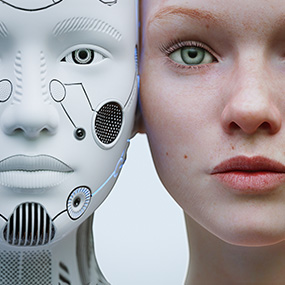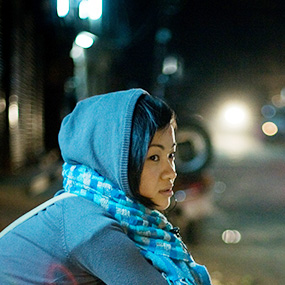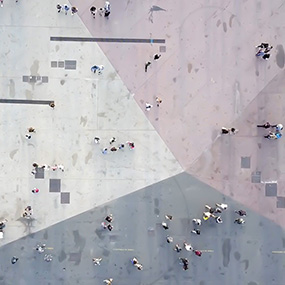Supervision by Koichi Hamai / Professor, Faculty of Law, Ryukoku University
1.The Misunderstanding that “Reflection = Rehabilitation”
"Are you truly repentant?"
This question is often directed by society at those who have committed crimes. However, Professor Koichi Hamai (Ryukoku University Faculty of Law) points out that “reflection does not equal rehabilitation.” He explains: “Reflection is merely an internal process, and rehabilitation requires the creation of a supportive social environment.”
For example, in recent years juvenile training schools have shifted their focus from merely encouraging reflection to providing education and creating environments to prevent repeat offenses. This shift reflects the growing recognition in support settings that “living difficulties” are a key factor leading to criminal behavior. Issues such as academic deficiencies, lack of social skills to build relationships, low self-esteem, and a lack of trust in others are being addressed through educational and psychological support programs.
“Very few people commit crimes when they are happy. That is why it is essential to create conditions that enable people to live happily. This is the prerequisite for rehabilitation support,” says Professor Hamai. In order for offenders to acquire the ability to live happily in society, it is essential to provide environmental support such as reskilling, rebuilding supportive relationships, and restoring self-confidence. Focusing solely on whether or not they are remorseful may cause us to miss opportunities for rehabilitation.
The revised Penal Code, which came into effect in June 2025, abolished the distinction between “imprisonment with labor” and “imprisonment without labor,” and introduced a single new category of “custodial sentence.” Also under this system, the purpose of incarceration is no longer to impose labor as a form of punishment, but to provide education and employment support tailored to the background of inmates, with the aim of supporting their rehabilitation. However, there are concerns that such measures aimed at promoting the rehabilitation of offenders may overlook the feelings of victims and their families. Therefore, prior to the introduction of custodial punishment, a mechanism called ”System to Convey the Victim’s Feelings” was established to enable victims and their families to directly express their emotions to offenders. This system aims not only to help offenders develop empathy for the victims’ perspective, but also to enable victims themselves to process their emotions through the opportunity to express them to offenders, thereby taking a step toward their own recovery. It is an initiative aimed at achieving the recovery of society as a whole—including victims—without leaving anyone behind.
In facilities such as juvenile training schools, education carried out to convey the feelings of victims has been conducted for some time. However, there have been cases where offenders, upon hearing statements such as, “I hope you remain unhappy for the rest of your life” from victims or their families, find rehabilitation difficult. Now that it is understood that low self-esteem increases the risk of reoffending, supporters are navigating a tension between “confronting the feelings of victims” and “helping offenders regain the ability to live in society,” struggling with internal conflicts as they seek to balance support for both offenders and victims.
2. Moving Beyond the Binary Opposition of “Victim Support vs. Offender Support”
There is a tendency to fall into the mindset that strengthening support for victims will lead to the neglect of perpetrators, while enhancing support for perpetrators will be seen as ignoring the feelings of victims. However, Professor Hamai argues that a perspective that transcends this dichotomy is essential for today’s society.
“Support for rehabilitation is ‘recovery support’ for everyone, regardless of who the target is.
It is not just for perpetrators. Victims and their families also need to regain their daily lives that have been disrupted. In that sense, support for perpetrators and support for victims are essentially the same in that the goal is ‘recovery of their daily lives.’”
Norway is known for its comprehensive support for offenders, but in fact its support for victims is even more extensive. Here the purpose of punishment is not limited to atonement, but rather to achieve both the rehabilitation of offenders and the recovery of victims through a concept of “restorative justice” that is deeply rooted in society. As a result, the recidivism rate is declining.
On the other hand, Japan’s support system remains vertically fragmented. Support for people with disabilities, the elderly, those in financial distress, and the perpetrators and victims of crime is managed by separate systems and different entities, leading to conflicts of interest between different areas of responsibility.
However, the root causes of the challenges faced by those in need of support are fundamentally the same. For example, juvenile training schools are filled with young people in so-called “NEET” situations, while prisons are filled with inmates who turned to crime because they had no jobs or homes. Underlying these circumstances are common factors such as isolation and the lack of a place to belong. In fact, as it has become clear that there are many elderly people and people with disabilities in prison, the recognition that “crime could have been prevented with welfare support” is spreading throughout society.
“What is needed is support to help people regain a ‘normal life.’ How can society as a whole ensure support to prevent isolation? In other words, the question is how inclusive society is,” says Professor Hamai.
It is necessary to build a support system that transcends the vertical divisions between welfare and justice, and to advance concrete collaboration toward a society where everyone can regain a “normal life.” Rather than viewing people as either victims or perpetrators, we must aim for a society where no one is isolated and everyone is included. This shift in perspective is an important first step toward viewing support as something we provide for one another.
3. Ensuring the sustainability of support through “mechanisms” and “people”
How can we ensure that support for rehabilitation is not a one-time response but rather a sustainable effort? Professor Hamai says that both institutional backing and the presence of support staff who accompany the concerned parties throughout the process are essential.
The enthusiasm that drives rehabilitation support forward often fades with the replacement of staff and the departure of founding members, raising the question of how to create a sustainable system. Attention is therefore turning to approaches that institutionalize support and embed it in the system. For example, a foundation was established in Nara Prefecture to employ ex-convicts and promote the social participation of people in vulnerable situations, taking Italy’s “Società cooperativa” as a model. The system receives institutional support through ordinances and the existence of an accompanying committee.
Another key factor is the presence of enthusiastic supporters who continue to engage with those involved. For example, the arson attack at Shimonoseki Station in 2006 was a case that highlighted the plight of prisoners who had fallen through the cracks of the support system. The inmate who set fire to the Shimonoseki Station building, a designated Important Cultural Property, was 74 years old at the time. He had repeatedly committed arson since his 20s and had been in and out of prison ten times. Each time he was released, he had no home or family to turn to and continued to lose his way. At the age of 74, after his tenth release, he was turned away by multiple local governments that refused to provide support due to his lack of a resident registration. He eventually made his way to Shimonoseki Station. Although no one was injured due to the late hour of the attack, the station building was completely destroyed by the fire.“For him, setting the fire was a means to return to prison,” said a social worker. “The fact that he had no other options highlights how his isolation led to this outcome.”
Upon learning of this incident, Mr. Tomoshi Okuda, who was engaged in work concerning support for the homeless in Kyushu, decided to assist the inmate.“This was also our responsibility for failing to provide support,” he reflected, and after multiple meetings with the inmate, Mr. Okuda submitted a petition to the prosecution and helped avoid an appeal, ultimately becoming his guarantor after his release. As a result, the inmate experienced his first release with someone waiting to greet him. After his release, he has been receiving support at a facility run by Mr. Okuda's NPO. He was released in his mid-80s and is now 94 years old. He has not reoffended and continues to live a stable life today.
The presence of such supporters plays an important role in filling gaps that cannot be covered by the system. Professor Hamai explains that the relationships built around individuals who inspire others to think “I can't refuse this person’s request” serve as the driving force behind support. However, he believes it is difficult to cultivate such supporters through programs or other structured approaches. “It’s more like a process of ‘awakening’ through on-the-job experience and chance encounters,” he says. “At first, you can’t refuse when asked for help, and before you know it, you become deeply involved and relied upon. Some people naturally become enthusiastic supporters through this process.”
However, no matter the level of enthusiasm, there is a risk that support may break down if supporters become isolated. To ensure sustainable support, it is essential to create a system that avoids overreliance on any one person while leveraging the passion of enthusiastic individuals. To prevent supporters from becoming isolated, Professor Hamai emphasizes the importance of actively involving people who have the potential to become supporters.“Someone might say, ‘this person could do it,’ and the person who actually takes on the role may end up becoming an important contributor.” Rehabilitation support can only become sustainable with the presence of enthusiastic individuals and the systems and networks which sustain them, preventing isolation.
4. Toward a Society Where People Can Say “Help!”
Professor Hamai rejects the view that criminals have special personality defects. Crime is often the result of people expressing their struggles through their actions while they have been pushed to the margins of society and face difficulties, and these difficulties are by no means someone else’s problem.
Rather than dividing people into those who cause trouble and those who are affected, we should imagine that “I too might one day cause trouble to someone else” and think of a society based on mutual support. This perspective is the starting point for designing such a society.
Hints for putting this perspective into practice can be found in Italy’s institutional framework. Italy’s “Società cooperativa” does not categorize those in need of support based on attributes such as disability, drug abuse, foreign nationality, or prior criminal record, but instead adopts a system that provides comprehensive support to “people facing difficulties.” A society that is ultimately amenable to everyone is created by social design, advanced from the perspective of how to include diverse attributes and circumstances, rather than by labeling people and weighing who should be helped.
All people facing difficulties should be able to speak up with peace of mind when they need support. And there should be a system in place for society to respond appropriately to those voices. Professor Hamai points out that the strong normative consciousness in Japanese society that “one must not cause trouble” has suppressed efforts to create such a society.The higher rate of long-term hospitalization, among others, compared with other countries for people with mental disabilities is symbolic of the deeply rooted belief that “families should take responsibility for those who cause trouble.”If we think that “those who cause trouble should be isolated from society by their families,” then families have no choice but to lock them up or force them into institutions. This could lead to results that are the exact opposite of the spirit of mutual support that aims to create a society where everyone supports each other.
In fact, events that can drastically change one's circumstances such as aging, illness, unemployment, or accidents can happen to anyone. No matter how healthy or successful one’s life may be, there is always the possibility that one day they may find themselves shifting from being the one who helps others to the one who needs help. And many people actually experience both roles simultaneously.
That is why it is essential for each of us to cultivate the awareness that “it could happen to me tomorrow,” and to work across disciplines to build a society where those facing difficulties can speak up and ask for help, and where their voices are heard and addressed by the entire society. This will be a crucial step toward creating a future where everyone can live with peace of mind.



























